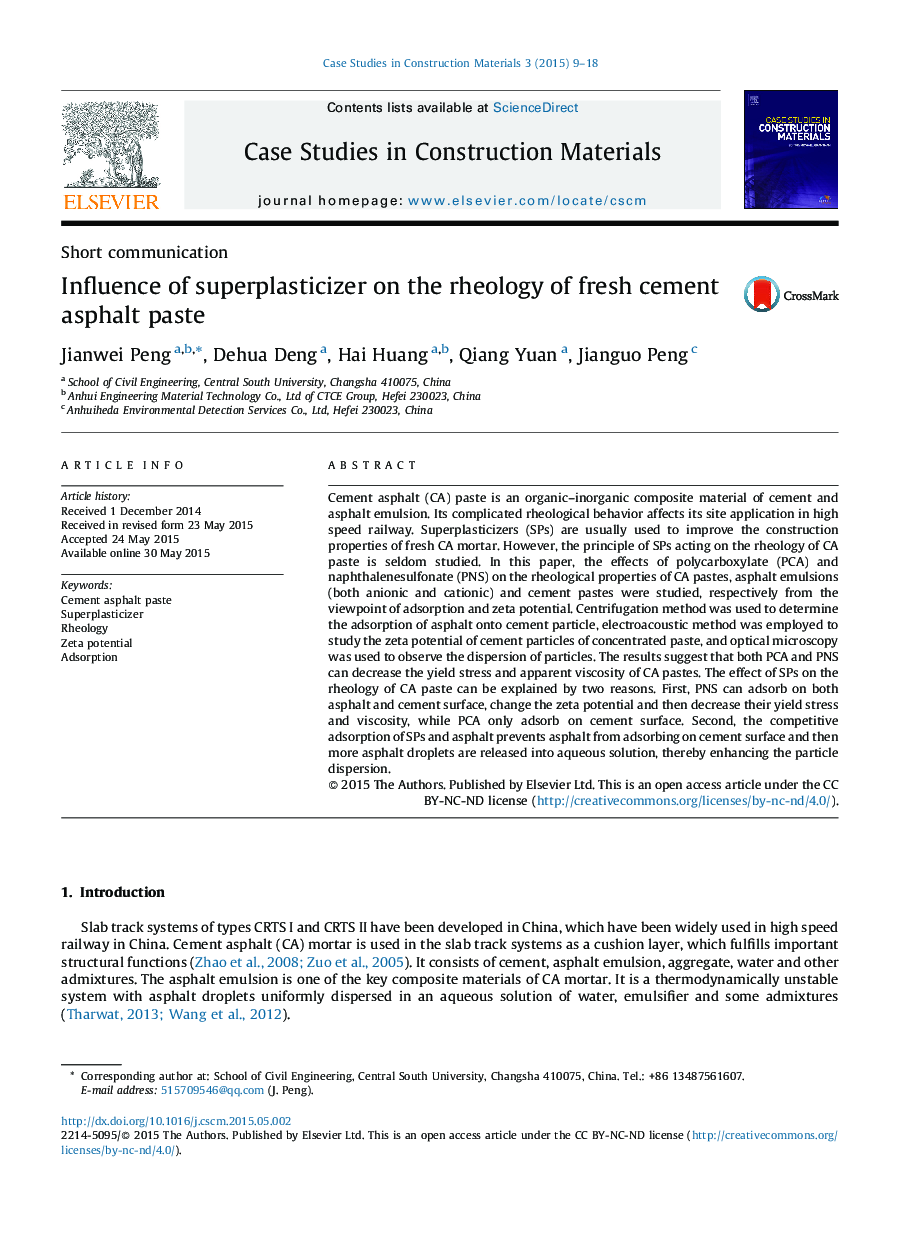| Article ID | Journal | Published Year | Pages | File Type |
|---|---|---|---|---|
| 250508 | Case Studies in Construction Materials | 2015 | 10 Pages |
Cement asphalt (CA) paste is an organic–inorganic composite material of cement and asphalt emulsion. Its complicated rheological behavior affects its site application in high speed railway. Superplasticizers (SPs) are usually used to improve the construction properties of fresh CA mortar. However, the principle of SPs acting on the rheology of CA paste is seldom studied. In this paper, the effects of polycarboxylate (PCA) and naphthalenesulfonate (PNS) on the rheological properties of CA pastes, asphalt emulsions (both anionic and cationic) and cement pastes were studied, respectively from the viewpoint of adsorption and zeta potential. Centrifugation method was used to determine the adsorption of asphalt onto cement particle, electroacoustic method was employed to study the zeta potential of cement particles of concentrated paste, and optical microscopy was used to observe the dispersion of particles. The results suggest that both PCA and PNS can decrease the yield stress and apparent viscosity of CA pastes. The effect of SPs on the rheology of CA paste can be explained by two reasons. First, PNS can adsorb on both asphalt and cement surface, change the zeta potential and then decrease their yield stress and viscosity, while PCA only adsorb on cement surface. Second, the competitive adsorption of SPs and asphalt prevents asphalt from adsorbing on cement surface and then more asphalt droplets are released into aqueous solution, thereby enhancing the particle dispersion.
